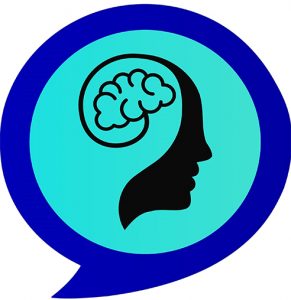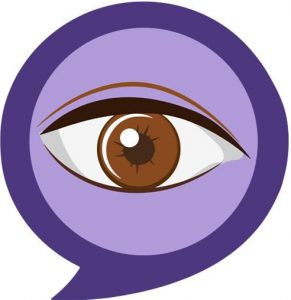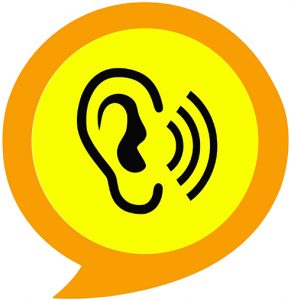About the icons & challenges:
Vision Impairment
Blind to the possibilities and unaware of the privilege of sight.
Not being able to see clearly affects so many aspects of a person’s life. It means that a person may not be able to read a price tag or a item’s description; may not see a posted sign or what items are on a shelf, or may have difficulty distinguishing a worker from a customer. In spite of this, they may be able navigate through a store on their own, but in the process, they miss so many details and opportunities. What this means is that so much of what others may take for granted and see during a day, is missed by someone who is blind or who has a vision impairment.
Most people don’t think about these things – nor do they think about how a lack of vision affects communication. Depending on the type and degree of vision loss, some people can’t see a persons facial details or who/what is in front of them, clear outlines or colours – so they may not know who is speaking to them or when they are being spoken to, and often miss expressions & gestures. Naturally, most of us assume that if a person can make their way through a room, then they can find who they need and what they want – so many workers just assume that people will know who to ask or can see their options for service, products and support.
The reality is that there is a lot of trust involved in navigating the world when you don’t have clear vision. It requires vigilance and is often frustrating – sometimes even scary. Someone whose vision is impaired may not see a glass door or wall; a step down; an object lying in or crossing, their path; or a white toilet in a white room with a white floor. This is why, if someone chooses to wear a purple eyesight pin you know they are asking to be invited into a conversation and they are telling you that they may need you to initiate the process and to offer to explain the details or the options available.
The next move is yours, are you ready to welcome this person to become your next appreciative and loyal customer knowing they will likely also be the source of new referrals?
Key supports: high contrast, verbal information as opposed to written, large fonts on signs or notable tactile features for navigation and a means to find you if they have further questions.
Hearing Impairment
Not being able to hear can be as annoying as not being heard. More than that, it can be very lonely.
Not being able to hear clearly makes many people think that a person who can’t hear clearly should simply get, and wear, hearing aides. They don’t understand how hearing aides amplify everything, or that they may cost many thousands of dollars and not work well for every condition or person – they just think it’s a quick & easy fix.
The reality is that hearing aides don’t work for everyone – for a variety of reasons – and many hearing impaired people try their best to make do without them. This means they may need to ask people to repeat themselves and may be frustrated if they can’t see the visual cues from a person’s face if the speaker chooses to multitask or if they simply try speaking loudly from another room. You may also notice that many people will casually talk over the din of a crowd or will speak normally through the barrier of a mask. They do this because hearing impairment is another hidden disability and many hearing able people blithely assume that when they speak, that others will hear. They do not see or understand the breadth of challenges posed by this hidden problem and sometimes these same speakers become impatient when they’re asked to repeat an item of conversation. The result of such repeated frustrations is that many will choose to limit their interactions with, or may even ignore, the hearing impaired person in social situations because that person is “too much work” or “they don’t pay attention”. This can lead to the person being under-supported and under-appreciated for what they can contribute which makes them lonely, withdrawn and less likely to seek out what they need for themselves.
Key supports: quiet environment for important issues, written information, display your face/body language when you speak, find activities that require less conversation/more action.
Speech Impairment

Not being able to find the right words or to speak clearly is especially frustrating because the person with such a challenge almost always knows what they want to share. They can be as intelligent and thoughtful as anyone but it’s as if there is one step in a series of instructions that is missing. It’s like a huge gap in ability which – if they that one extra step – they could easily and intelligently express their thoughts as speech.
Imagine trying to express what you want, but your message is delayed – by a stutter, or lisp, a verbal tic or a voice that’s too quiet to be easily heard. It may be that none of those are an issue, but instead that you cannot find the appropriate words, so you end up trying to describe your need but with missing or misleading words in your explanation. The average person who speaks to you is likely to be uncomfortable about how to respond and will be hyper-focused on your challenge thereby missing the point of what you are trying to convey. This makes them less effective in talking with you because they are less interested in your original query or information sharing than they are about ending the discomfort. In many situations, they may guess what you want and give you a quick response because they think that this will make you both feel more comfortable. The result is that – in our fast paced world, you have just been served & dismissed….and you may have received anything close to what you wanted.
People with speech impairments often need a little extra time, but they also feel the pressure of our time focused world as impatience towards them and discomfort because it. They know that because of this cultural imperative to be efficient, that most conversations will be limited and they should aim to share their most immediate need. This means that much of what they might have, otherwise, enjoyed getting, sharing, knowing about or exploring is capped because their disability is a distraction that causes conversations to end quickly. When this happens, it leaves them underserved, undervalued and just plain exhausted. The question then is: how much are you missing out on as a result?
Key supports: relax, give them time, offer options, read their body language before jumping in, and offer a welcoming means to follow up or get more information later if they want.
Cognitive challenges
(limitations to thinking and memory)

Our brains are amazing, but like everything – they aren’t perfect in every regard, and a brain can also be challenged or tired – especially if it has been injured by accident or disease.
Traumatic injuries, concussion, stroke, dementia & disease – all of these seem like huge issues and can be scary to consider. So I’m going to reframe this issue and ask you to think of the challenges of a tired brain.
A tired brain can be expected to miss details, forget things, have trouble focusing, it can even make a person want to sleep or limit the mental work they have to make it do. Understandably, for a person who wants to be out and doing things – a tired brain can also cause a serious amount of annoyance, exasperation or embarrassment at the limitations that it causes.
Understanding this is important, because there are many people whose brain is has to work harder because of an injury caused by an accident or by a disease process. This can mean that their attention span, concentration, memory and/or understanding is limited – and you may never know it to look at them….unless they are wearing a our blue icon. The fact that they are out, about, and shopping for products or services, socializing and living means that they want to get more and they want to give more. This is where we all can help make a difference by keeping things short, relevant and simple.
If a person is sporting a blue Want2Talk icon, then they are offering to put in a lot of extra work to support your business or to listen to your side of a conversation. All you have to do is remember the tired brain analogy as you help them connect. Use your Want2Talk training, your creativity and most importantly: your insight into the benefits and the challenges of your business.
Key supports: Don’t rush, isolate topics of interest, focus on them and key points, listen and supply extra resources they can review for later.

